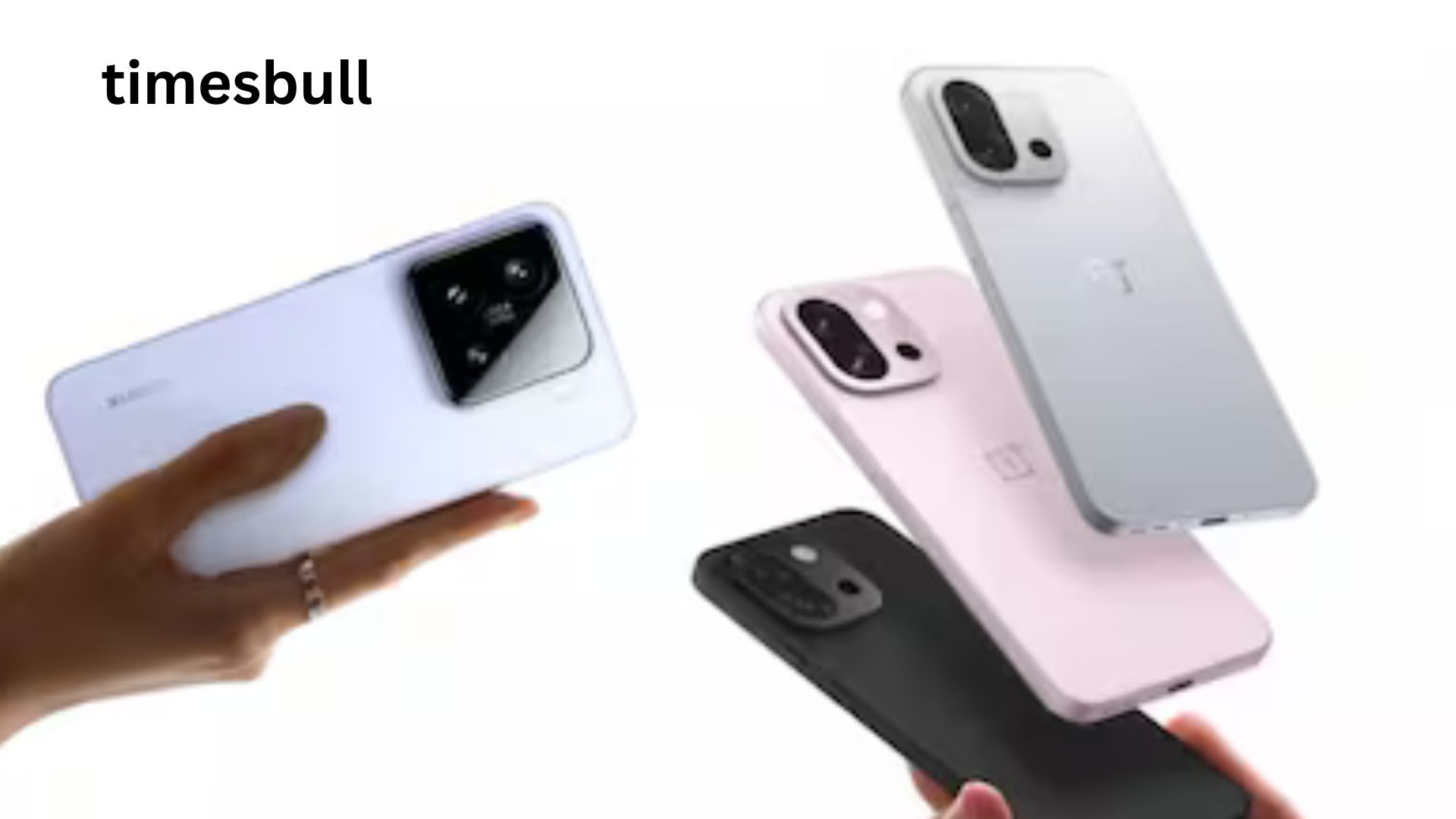OnePlus 13s vs Xiaomi 15: There has been a lot of activity in India’s small flagship space. Arriving in March, Xiaomi’s 15 offered premium hardware in a stylish, affordable package. With the release of the OnePlus 13s earlier this week, OnePlus has now retaliated, promising comparable performance at a more competitive price, in addition to its own hardware enhancements and distinctive design features.
Sharp 1.5K OLED screens and Qualcomm’s Snapdragon 8 Elite processor power both phones. But after that, they begin to take different tacks. To assist you in selecting the item that may be most appropriate for you, we have carefully examined each one’s specifications, functions, and general worth.
Design and Build
With the Xiaomi 15, Xiaomi has improved the design of its small flagship device. Its dimensions are 152.3 mm in height and 71.2 mm in width. It weighs only 181 g and has a thickness of 8.08 mm. While the metal frame has a sharp edge and is flat, its thin profile and rounded edges make it incredibly pleasant to use with one hand. Particularly striking is the Liquid Silver version, which has a 3D hot-bent glass finish that ripples and shimmers when touched.
At 150.81mm tall and around the same width at 71.7mm, the OnePlus 13s is marginally smaller. At 8.15mm, it is significantly thicker, and weighing 185g, it is slightly heavier. OnePlus has placed a lot of emphasis on grip and weight distribution. The phone feels incredibly solid in your hand thanks to its 50:50 balance and curved 2.5D glass back. With a smooth Velvet Glass texture, the India-only Green Silk finish is likewise a novel and high-end option.phones are well-built, but the Xiaomi 15 feels more industrial and angular, while the OnePlus 13s feels more organic and ergonomic. Pick based on what kind of aesthetic you prefer in your daily carry.
Display
Both phones use high-end LTPO AMOLED displays, which provide sharp 1.5K resolution and adjustable refresh rates between 1Hz and 120Hz.
With a peak brightness of 3200 nits, Dolby Vision, HDR10+, and 1920Hz PWM dimming for flicker-free low-brightness use, the Xiaomi 15 has a 6.36-inch M9 OLED. Its uniformly thin 1.38mm bezels are excellent, and Xiaomi’s Shield Glass should provide some extra protection.
A slightly smaller 6.32-inch LTPO AMOLED with a maximum brightness of 1600 nits and support for Dolby Vision is featured in the OnePlus 13s. Outside in direct sunshine, the fact that it is not as brilliant as Xiaomi’s panel will be significant. Nevertheless, it has good tuning right out of the box and is a crisp, color-accurate display.
The Xiaomi 15 outperforms its rivals in terms of sheer screen performance; its regular bezels and brightness make it difficult to match in terms of visual clarity.
Performance
The Snapdragon 8 Elite processor and 12GB of LPDDR5X RAM power both smartphones. The OnePlus 13s offers you an option between 256GB and 512GB of UFS 4.0 storage, whilst the Xiaomi 15 comes with 512GB as standard.
Both companies have worked hard in the field of thermal management. The IceLoop Wing-Type System in the Xiaomi 15 triples the efficiency of conventional VC cooling. A 4,400mm² Cryo-Velocity Vapor Chamber and an extra layer of graphite on the back cover are features of the OnePlus 13s.
Software
Whereas OnePlus runs OxygenOS 15 on top of Android 15, Xiaomi offers the 15 with HyperOS 2 based on Android 15. With four years of major OS updates and six years of security patches, Xiaomi is on par with OnePlus in terms of long-term software support. As a result, both phones have an identical chance of lasting.
The software experience, however, is another matter. Still, OxygenOS is thought to have a more streamlined, fluid UI that is more akin to vanilla Android. Despite significant improvements, HyperOS still occasionally feels heavier due to the increased number of pre-installed programs. OnePlus still has a small advantage in terms of software polish if you seek simplicity.
Camera
Xiaomi launched its complete image system, supported by Leica, on the 15th. It features a 50MP 2.6x telephoto, a 50MP ultra-wide, and a 50MP 1/1.31″ primary sensor with an f/1.62 aperture, all of which can be modified using the Xiaomi AISP 2.0 computational photography platform. Along with a 32MP front camera that can capture 4K 60fps video, you also get 8K video recording.
With the 13s, OnePlus adopts a more straightforward strategy: it lacks an ultra-wide camera but has a 50MP Sony LYT-700 primary sensor and a 50MP 2x telephoto. The 32MP front camera can film at up to 4K 30 frames per second and has autofocus.
When it comes to agility, Xiaomi wins hands down. Simply put, you get a more comprehensive package, better computational tweaking, and more camera possibilities. One significant absence for a flagship device in 2025 is the OnePlus 13s’ lack of an ultra-wide lens.










